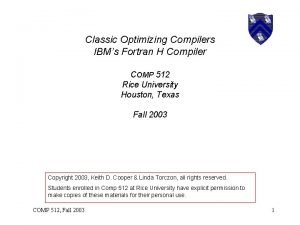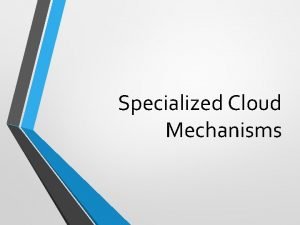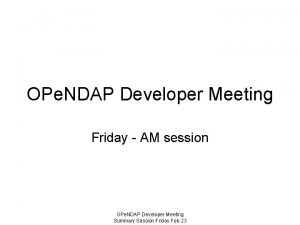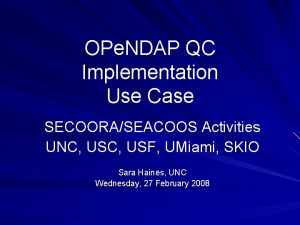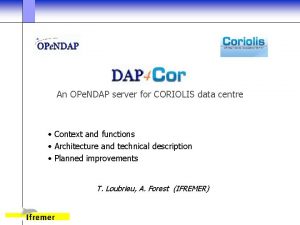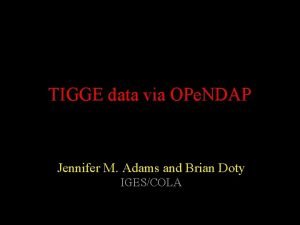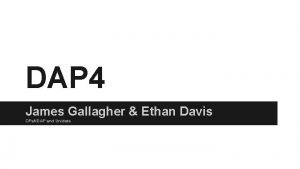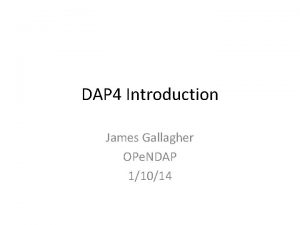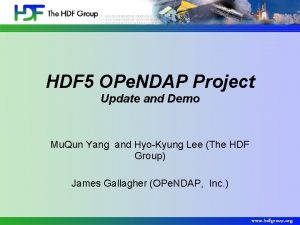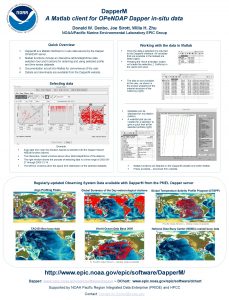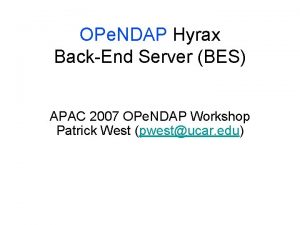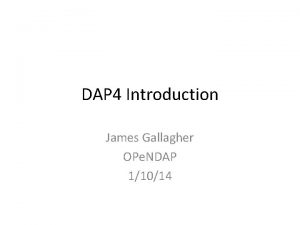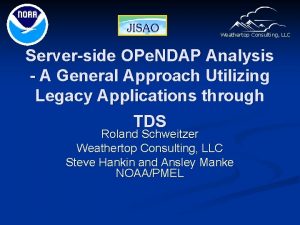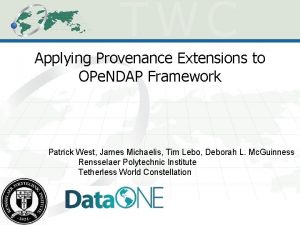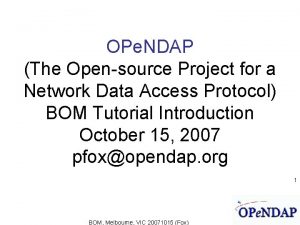OPe NDAP in the Cloud Optimizing the Use






















- Slides: 22

OPe. NDAP in the Cloud Optimizing the Use of Storage Systems Provided by Cloud Computing Environments OPe. NDAP James Gallagher, Nathan Potter and NOAA/NODC Deirdre Byrne, Jefferson Ogata, John Relph Originally presented at the Fall 2013 AGU Meeting in San Francisco

Cloud Systems Now* • Providers: IBM, Microsoft, Amazon, Google, Rackspace, … • Microsoft: Azure “… handles 100 petabytes of data a day” • Amazon: “…hundreds of thousands of users” • Netflix: “. . stopped building it’s own data centers in 2008; ” all in Amazon by 2012 • Snapchat: 4000 pictures per second; “…never owned a computer server. ” (Google cloud) *Quentin Hardy, “Google Joins a Heavyweight Competition in Cloud Computing, ” NY Times, 3 December 2013

Why use OPe. NDAP? Full dataset OPe. NDAP request 100% Download • • 4% Download The. OPe. NDAP request smaller and is just the data the person wants In cloud systems cost is a function of data transfer, in addition to to data stored, so smaller targeted requests reduce costs

NOAA Environmental Data Management Conceptual Cloud Architecture* *Aadapted from NOAA Environmental Data Management Framework Draft v 0. 3 Appendix C - Dr. Jeff de La Beaujardière, NOAA Data Management Architect Potential locations of cloud-enabled OPe. NDAP instances

Constraints • No vendor lock-in! • No Stovepipes! - flexible storage method • What will be the client of 2020? • Hierarchical/human browsable dataset file

Data stores: S 3 and Glacier • S 3 • Spinning disk with a flat file system • Designed to make web-scale computing easier • Glacier • Near-line device with 4 -hour (or >) access times • Secure and durable storage • EC 2 was used to run the OPe. NDAP data server • Linux

Using S 3 as a Data Store HTTP GET & HEAD requests S 3 Catalog Data

Web requests Catalog, or data request S 3 XML or data file

OPe. NDAP Catalog requests User catalog Request EC 2 OPe. NDAP Server THREDDS catalog or HTML catalog cache Catalog Access S 3 data cache XML File To enhance performance, data were accessed from S 3 only when not already cached.

OPe. NDAP Data requests User data Request EC 2 OPe. NDAP Server Data Slice catalog cache Data Access S 3 data cache Data File To enhance performance, data were accessed from S 3 only when not already cached.

Observations • • • S 3 FS & Amazon's APIs: vendor lock-in XML catalogs were flexible: • • Support both direct web and… Subsetting server access Likely adaptable to other use-cases Easily support hierarchical structure Catalogs didn't need to be stored in S 3

Glacier and Asynchronous Responses • To use Glacier, a web service protocol must • support asynchronous access! Glacier is a near-line device; not a spinning disk. Support via protocol is not enough: typical use cases cannot be met without caching ‘metadata’ o To support web interfaces/clients DAP metadata objects should be cached o To support smart clients, may need Range data in cache

Glacier Implementation • Caching o Catalog o DAP metadata • Support for programmatic and web clients o Web clients are the primary user of the DAP metadata because of their ‘click and browse’ behavior • XML with an embedded XSL style sheet o Single response (XML) o Multiple target clients – smart and browser








Comparison: S 3 and Glacier* • Glacier provides “secure and durable storage” • S 3 is “designed to make web-scale computing easier” • These graphs: A tiny part of complex cost model. They do not include the cost to move data out of the Amazon cloud, EC 2 instances, etc. *http: //calculator. s 3. amazonaws. com/calc 5. html

Summary • OPe. NDAP server with minimal changes • Data stored in S 3 and Glacier • Solution widely applicable: Web + Smart clients • Complexity of the cost model combination of both S 3 and Glacier likely • Modeling & Monitoring use required
 Ope judicis e ope legis
Ope judicis e ope legis Ndap formula example
Ndap formula example Ope accreditation
Ope accreditation Aparato critico
Aparato critico Ope p
Ope p Pre registro ope
Pre registro ope Mrten
Mrten Slope intercept form
Slope intercept form Ope exceptionis
Ope exceptionis The fortran optimizing compiler
The fortran optimizing compiler How is economizing different from optimizing?
How is economizing different from optimizing? Optimizing patient flow
Optimizing patient flow Optimizing parallel reduction in cuda
Optimizing parallel reduction in cuda Reduction cuda
Reduction cuda Snapcloud
Snapcloud Cloud to cloud integration patterns
Cloud to cloud integration patterns Cloud computing refers to
Cloud computing refers to Public cloud vs private cloud cost analysis
Public cloud vs private cloud cost analysis Specialized cloud mechanisms
Specialized cloud mechanisms 3 complete the sentences
3 complete the sentences Vẽ hình chiếu đứng bằng cạnh của vật thể
Vẽ hình chiếu đứng bằng cạnh của vật thể đại từ thay thế
đại từ thay thế Quá trình desamine hóa có thể tạo ra
Quá trình desamine hóa có thể tạo ra









